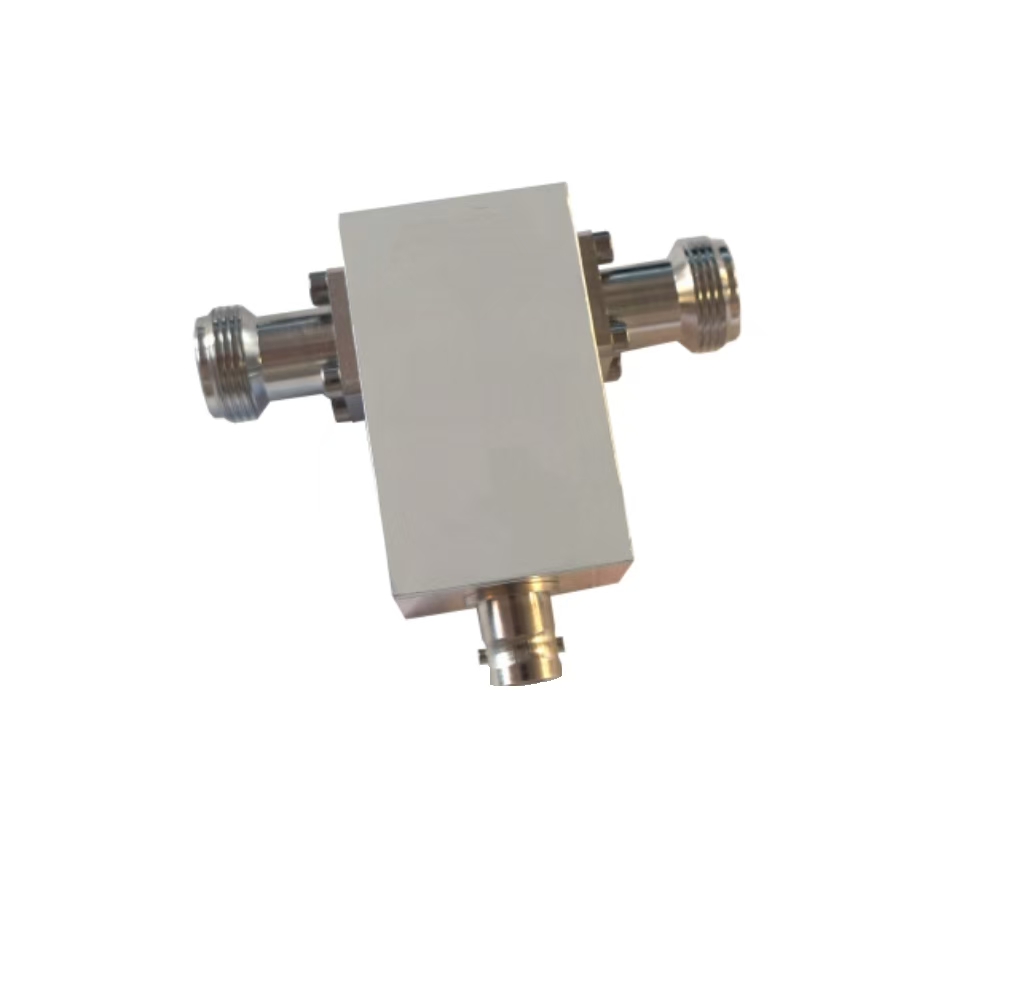Introduction
In the world of RF (Radio Frequency) and microwave systems, efficiently combining DC power and high-frequency signals is a critical challenge. This is where BIAS-TEE devices come into play. A BIAS-TEE is a three-port network that allows DC power injection into an RF signal path without disrupting high-frequency performance.
This article explores:
What a BIAS-TEE is and how it works
Key benefits in RF and microwave applications
Common use cases in telecommunications, test & measurement, and satellite communications
How to choose the right BIAS-TEE for your system
By the end, you’ll understand why BIAS-TEEs are essential for 5G, satellite communications, and advanced RF testing.
1. What is a BIAS-TEE?
A BIAS-TEE is a passive component that combines DC power and RF signals into a single coaxial line while preventing interference between the two.
Key Features:
DC Pass Port: Injects power (e.g., for amplifiers or active antennas)
RF Pass Port: Maintains signal integrity for high-frequency transmissions
Blocking Capacitor: Prevents DC from leaking into sensitive RF circuits
How It Works:
1、DC Input: Supplies power to active components (e.g., LNAs, amplifiers).
2、RF Input/Output: Allows RF signals to pass through with minimal loss.
3、Isolation: The internal inductor blocks RF from entering the DC source, while the capacitor blocks DC from affecting the RF path.
2. Key Benefits of BIAS-TEEs
A. Simplified System Design
Eliminates the need for separate power and signal cables
Reduces system complexity in RF amplifiers, antennas, and test setups
B. Minimal Signal Loss
High-quality BIAS-TEEs maintain low insertion loss (< 1dB in many cases)
Preserves signal integrity for 5G, satellite, and mmWave applications
C. Broad Frequency Support
Available for DC to 40 GHz+
Compatible with L-band, C-band, Ku-band, and mmWave frequencies
D. Compact & Reliable
Small form factor ideal for PCB integration or lab equipment
Robust construction for field and industrial use
3. Common Applications
A. Telecommunications & 5G
Powers active antennas and small-cell amplifiers
Ensures clean signal transmission in massive MIMO systems
B. Satellite Communications
Provides DC bias for LNB (Low-Noise Block) amplifiers
Used in VSAT, Starlink, and military SATCOM systems
C. Test & Measurement
Enables vector network analyzer (VNA) measurements with active DUTs
Supports noise figure and amplifier testing
D. Radar & Defense Systems
Powers phased-array radar modules
Used in electronic warfare (EW) and signal intelligence (SIGINT)
E. IoT & Wireless Sensors
Simplifies power delivery for long-range RF sensors
Used in smart city and industrial IoT deployments
4. Choosing the Right BIAS-TEE
When selecting a BIAS-TEE, consider:
Frequency Range (DC-6GHz, DC-18GHz, DC-40GHz, etc.)
Insertion Loss (Lower is better for sensitive RF systems)
DC Current Rating (Typically 100mA to 2A)
Connector Type (SMA, N-type, 2.92mm, etc.)
Power Handling (Important for high-power amplifiers)
5. Future Trends
Higher Frequency Support (Beyond 50 GHz for 6G and THz applications)
Integrated Active BIAS-TEEs (With built-in regulators for precision power control)
Miniaturization (For compact mmWave and IoT devices)
Conclusion
BIAS-TEEs are indispensable in modern RF systems, enabling efficient DC power injection without signal degradation. Whether for 5G, satellite communications, or advanced testing, choosing the right BIAS-TEE ensures optimal performance and reliability.
AFU TELECOM is a Wireless Telecom Solution Expert with professional supporting on our customers' business globally. AFU TELECOM is always focusing on and specializing in O-RAN, Marco Cell, Small Cell, Active DAS, Public Safety and Optics Network Solutions including Antennas, Filters/Combiners/TMAs, RF Repeaters, Optics Devices and Site Accessories, especially AFU Core Team are very professional in Wireless Telecom with rich experience on our product portfolios. The Highest Priority of AFU TELECOM is Customers' Satisfaction and Product Quality. AFU MISSION IS TO CONNECT EVERYTHING!


